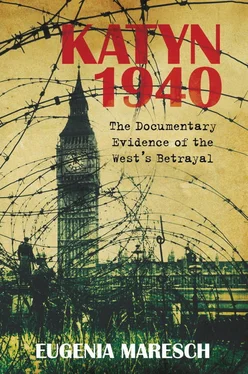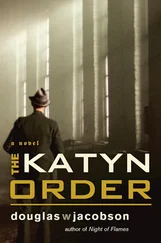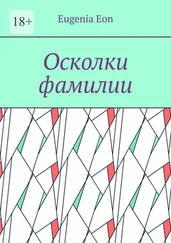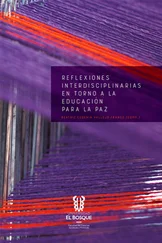In 1975, a 20-foot black granite obelisk was erected with a large engraving of the year ‘1940’ and the words: ‘The conscience of the world cries out for a testimony to the truth.’ Hidden among the trees in the tranquillity of Kensington & Chelsea Cemetery next to Gunnersbury Park in west London, the monument was unveiled by Mrs Maria Chełmecka, widow of an officer murdered in Katyn. With dignity and prayers, completely unacknowledged by the British authorities, the monument became a symbol of the truth. It is known that those who attended unofficially were forbidden to wear uniforms, but Sir Frederic Bennett, Major John Gouriet and Air Marshal Sir Walter Merton turned out in full dress. Also present were the representatives of the British Legion and some 20 MPs. Two Scottish pipers played a moving lament, in the absence of the Royal Artillery Band, who had previously been criticised for playing at an Anglo-Polish function. The FCO did not want to be seen condoning the association of the Band with a ‘political forum’ or to associate British military personnel, even indirectly, ‘in any way that might have implications for relations with Poland and ultimately the Soviet Union’. [16] TNA FCO 28/1947 report by Derek Tonkin, EE&SD, 28 November 1972.
CHAPTER ELEVEN
GATHERING OF DOCUMENTS BY THE FCO
In the light of this unprecedented exposure of Katyn in Parliament and in the media, the public became aware of the divergence of opinion within Whitehall. It was considered prudent to prepare a summary of documents on Katyn, in case some British researchers or investigators from abroad challenged the sources.
This task was passed to the Historical Adviser of the FCO, who in his preamble to a memorandum wrote: ‘It is like being forewarned of a possible future inflow of archival documentation from Russia and perhaps the Russians might just be forthcoming about Katyn in the future.’ Prophetic words! The memorandum was to be the first attempt at compiling Katyn documents and looking afresh at some of the Russian evidence of 1943. It was to be a concise dossier of information for the newcomers at the FCO, who had limited knowledge of the subject and tended to rely on the dated briefs. The collation revealed that some civil servants expressed a different judgement on Katyn to that of British government policy down through the years.
Rohan Butler’s Memorandum
Dr Rohan D’Olier Butler was the Historical Adviser to the Secretary of State at the FCO who would organise the work. A Fellow of All Souls Oxford, he was a senior editor of the Foreign Office series Documents on British Foreign Policy. Butler’s intention was not to present evidence, but to record the reactions of Foreign Office officials to the Katyn story. The interim memorandum contained 35 paragraphs of extracts from documents and confidential papers from various departments, designed only for internal circulation, entitled Reactions in the Foreign Office to the Katyn Massacre. [1] TNA FCO 28/1946 ENP 10/1, first draft of a memorandum ‘Reactions in the Foreign Office to the Katyn Massacre’, compiled by Dr Rohan D’Olier Butler, assisted by Miss J. Roskill and Miss C. Gray, for the attention of Julian L. Bullard and Sir Thomas Brimelow, Parliamentary Under Secretary of State, 4 September 1972.
It included the material from 1943 onwards; anything prior to it was considered to be already covered by the Research Department – which was an oversight on Butler’s part, as evidence despatched by the British Military Mission in Moscow 1940–42 was of some significance. The memo covered the Nuremberg Trials of 1946 and the Congressional Enquiry of 1952. Butler’s selection was occasionally surprising. Writing on the Congressional Hearings, he chose to describe the hooded witness, whilst completely ignoring Van Vliet’s statements, and more important, he did not disclose the silence kept about Gilder’s report. He also accepted and quoted one of Denis Allen’s derisive explanations, that the Soviets could not have known the whereabouts of the Polish officers because of a massive administrative breakdown of the Soviet PoW system.
The first draft of the memorandum was ready by 4 September 1972, and Butler passed it onto his colleagues of the EE&SD and IRD (Information Research Department) for appraisal. For the first time since 1944 Professor Sumner’s critique of the Burdenko report was to be scrutinised by new people at Whitehall. Butler summed the situation up rather prettily: ‘Historical evidence may coincide with political convenience – but the latter does not dictate the former.’
Critical Appraisal of Butler’s Report
Mervyn Jones of the IRD, who wrote a topical commentary about Miesięcznik Literacki in 1969, was first to express his thoughts on the memorandum. He concentrated particularly on the analysis of the contents of the Russian report and found many discrepancies. He considered Butler’s case against the Russians to be understated. [2] TNA FCO 28/1946 ENP 10/1, appraisals of Butler’s memorandum dated between 15 September and 13 November 1972 by: D. Mervyn Jones (IRD), K.H. Duke (East European Section Research Department), Julian L. Bullard (EE & Soviet Department), Anthony Royale (PUS) and Derek Tonkin (East European & Soviet Departmento.
It is not known if Mervyn Jones had read a report of April 1948, which was sent from the British Embassy in Ankara to Sir Anthony Meyer of the IRD. The report was a summary of evidence collected by a Commission of Enquiry set up by General Anders. After the inconclusive verdict at the Nuremberg Trials and the beginning of cooling of Soviet-British relations, the report was intended as a piece of anti-Soviet propaganda. The IRD was very much opposed to the use of the report for this purpose. The British did not want to take a stand in support of General Anders that would elicit criticism in the UK and thereby negate any propaganda value anyway. [3] TNA FO 371/71707B N4297, British Embassy in Ankara, 3 April 1948, an account of Katyn massacre, probably based on Supplementary Report written in 1946 by the Poles. Handwritten memo instructs no stand to be taken in support of General Anders or any use of it for propaganda purposes.
Mervyn Jones continued his critical appraisal of Butler’s report, by alluding to some ‘blurring of distinction’ between the assessment of the evidence and the British desire to believe the best of the Russians. Jones felt that Butler should have clearly stated the basic facts at the outset, that up to 1973 no survivors from other camps Starobelsk or Ostashkov had ever appeared alive. He insisted on the importance of a meeting in October 1940 of Merkulov, Deputy head of the NKVD in Moscow, with a group of Polish officers, among them Lt Colonel Zygmunt Berling. When it was suggested to him that the Polish Army in the USSR would be reinforced with officers from the PoW camps of Ostashkov, Starobelsk and Kozelsk, Merkulov had replied ‘No, not those, we have made a great mistake with them.’ There is another reported version of this statement – ‘We gave most of them to the Germans’ – referring to the agreement between Hitler and Stalin regarding the exchange of PoWs in December 1939 at Zakopane. The chief administrator of the NKVD dealing with prisoners of war Major Pyotr Soprunenko reported on 25 October 1940 that according to a decision of the Central Committee, 33,000 PoWs of the Polish Army from the German-occupied zone of Poland, plus civilian workers, 42,440 men in total, were deported to Germany. This figure excluded 8,403 men engaged on building project No.1 and a further 3,619 on forced labour at Narkomchermet. [4] Katyn Dokumenty Zbrodni, losy ocalałych (Katyn Documents of Crime, the fate of survivors), NKVD documents edited by Wojciech Materski, Natalia Lebedeva and others. Warsaw 2001, Vol III, p.186, document No. 68.
Читать дальше












